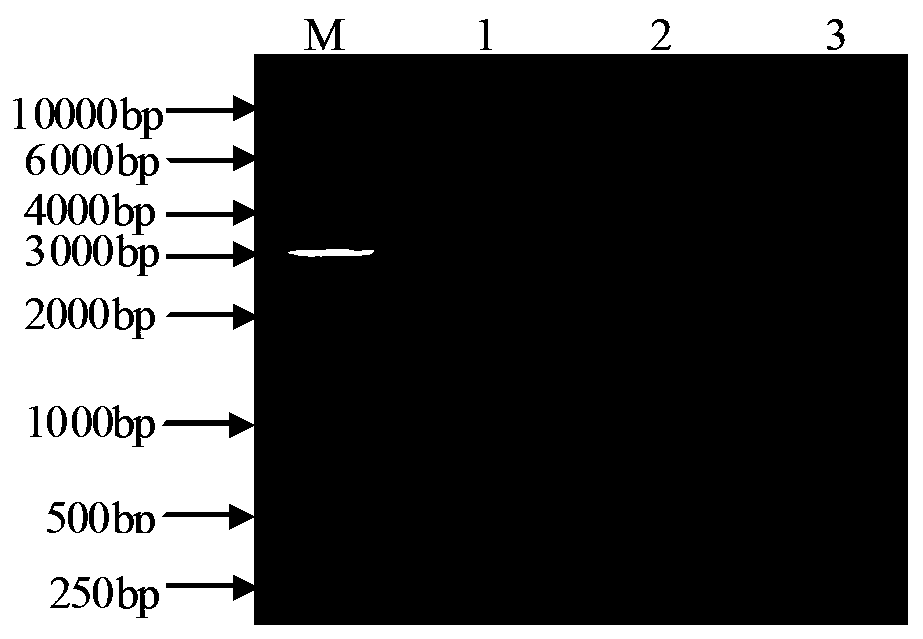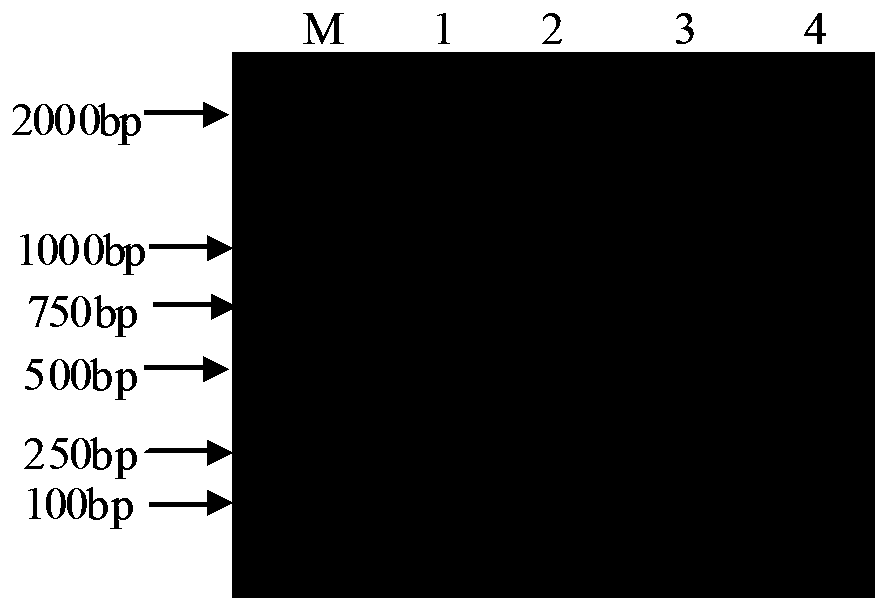Salmonella abortus equi strain SMXJ-97 and application thereof in salmonella abortus equi vaccine
A technology of SMXJ-97 and Salmonella, which is applied in the field of preparation of inactivated vaccines, can solve the problems of not being able to meet the needs of the rapid development of the horse industry, differences in mutual immunity, and difficulty in achieving effective control, and achieve high product added value and no scattered vaccines. Poison hazard, high market demand effect
- Summary
- Abstract
- Description
- Claims
- Application Information
AI Technical Summary
Problems solved by technology
Method used
Image
Examples
Embodiment 1
[0038] Example 1: Culture and biological characteristics of Salmonella equine abortus strain SMXJ-97 CGMCC No.9047.
[0039]Salmonella abortus equine strain SMXJ-97 CGMCC No.9047 was isolated from the fetus of aborted horse, inoculated in MM medium, and cultured at 37 ℃ for 12-15 h. The bacteria has the following characteristics: (1) Colony characteristics: On MM medium, it grows into white colonies with round shape, smooth surface, protrusions, neat edges, and uniform shape and size. (2) Cell morphological characteristics: The bacteria are straight rod-shaped, with a size of 0.7-1.5 μm×2.0-5 μm, and Gram staining is negative. (3) Physiological and biochemical characteristics: It is an aerobic and facultative anaerobic bacteria, which can grow on ordinary culture medium, the growth temperature is from 25 ℃ to 40 ℃, the optimum temperature is 37 ℃, the pH growth range is 5-9, the optimum PH7.4~7.6. Can ferment mannitol, decompose lysine, do not decompose urea, cannot use tryp...
Embodiment 2
[0041] Embodiment 2: PCR amplification and sequence determination of the 16S rRNA gene of Salmonella abortus strain SMXJ-97 CGMCC No.9047
[0042] Salmonella equine abortus strain SMXJ-97 CGMCC No.9047 was inoculated in liquid medium, and the fermentation broth grown to the late logarithmic period was centrifuged (5000 rpm / min, 5 min) to remove the supernatant, and TE (50 mM Tris, 50 mM EDTA-Na 2 ) solution for 2 times; mix the cells with 0.5 mL TES solution, add appropriate amount of lysozyme, and incubate at 37 ℃ for 2 h; add 0.2 mL 20% SDS, and incubate at 60 ℃ for 10 min; add 0.3 mL 5 M NaClO 4 , mix well; add an equal volume of phenol-chloroform-isoamyl alcohol (25:24:1), shake gently for about 5 minutes, centrifuge (5000 rpm, 5 minutes), absorb the supernatant, and then use phenol- Chloroform-isoamyl alcohol (25: 24: 1) was treated once; then chloroform-isoamyl alcohol (24: 1, v / v) was treated twice until no protein film appeared; supernatant was added with 20 μL 0.2% ...
Embodiment 3
[0047] Embodiment 3: Preparation of inactivated antigen
[0048] The isolates were inoculated in MM medium supplemented with 2% horse serum, cultured at 37 °C and 180 r / min for 18-24 h, and inactivated with 0.4% formaldehyde for 36-48 h. After complete inactivation, centrifuge at 7000 rpm / min for 15 min to remove the supernatant. The bacterial pellet was diluted to 1×10 with sterile PBS (pH7.2, 10 mmol) 7 CFU / mL. Immunize rabbits after emulsification with the same amount of complete Freund's adjuvant, emulsify with the same concentration of bacteria and the same amount of incomplete Freund's adjuvant 3 weeks later, sterility test and safety test are carried out after the vaccine is fully shaken and mixed.
PUM
 Login to View More
Login to View More Abstract
Description
Claims
Application Information
 Login to View More
Login to View More - R&D
- Intellectual Property
- Life Sciences
- Materials
- Tech Scout
- Unparalleled Data Quality
- Higher Quality Content
- 60% Fewer Hallucinations
Browse by: Latest US Patents, China's latest patents, Technical Efficacy Thesaurus, Application Domain, Technology Topic, Popular Technical Reports.
© 2025 PatSnap. All rights reserved.Legal|Privacy policy|Modern Slavery Act Transparency Statement|Sitemap|About US| Contact US: help@patsnap.com


